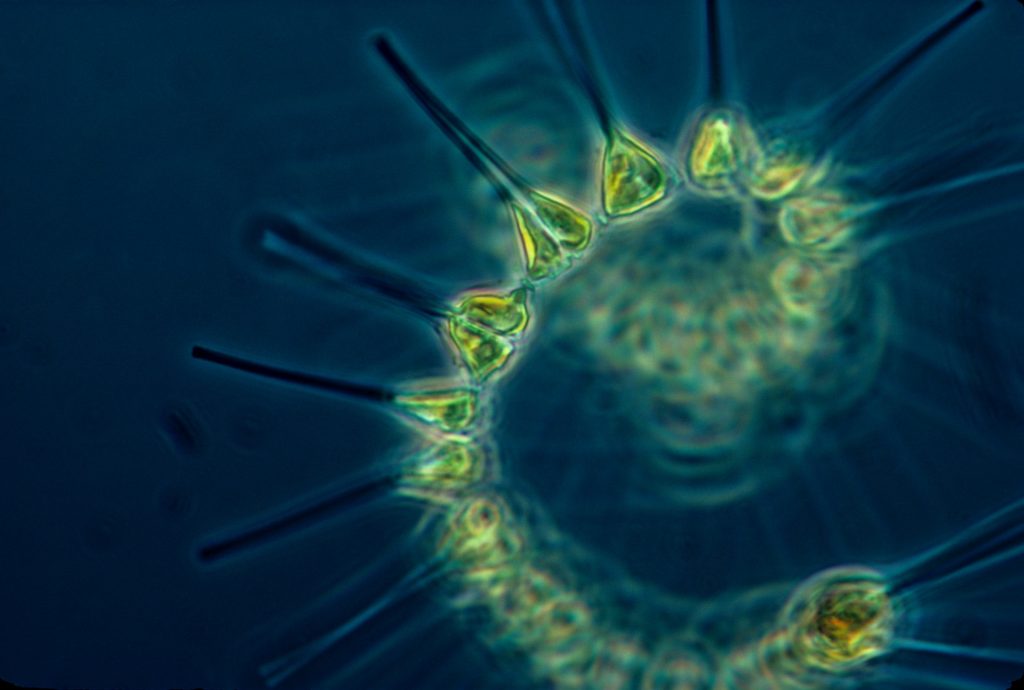
The Microscopic Titans of the Ocean: Deciphering Phytoplankton’s Role in Climate Change
In the boundless blue expanse of the Earth’s oceans, the tiniest organisms—phytoplankton—are performing colossal feats. These microscopic entities have recently surfaced as the unsung heroes in a revolutionary study, showcasing their outsized impact on the world’s climate dynamics.
Historical Insights: The Redfield Legacy
The significance of phytoplankton in the carbon cycle has been well-documented: they are nature’s own carbon capture system, drawing in carbon dioxide via photosynthesis. Yet, recent discoveries highlight their influence stretches beyond merely carbon. Their nutrient uptake, notably nitrogen (N) and phosphorus (P), plays a crucial role in determining the chemical balance of oceans, and subsequently, our air.
Travel back in time to the 1930s, and you’ll meet American oceanographer Alfred C. Redfield. He unearthed a fascinating observation about these micro-entities. He discerned that the concentration of elements in marine phytoplankton—carbon, nitrogen, and phosphorus—maintained a consistent proportion, now renowned as the Redfield ratio. The realization that the nitrate to phosphate ratios in the sea mirrored those in phytoplankton posed a puzzling question: Who’s shaping whom?
Modern Breakthroughs: Challenging Old Beliefs
Enter Dr. Chia-Te Chien from the GEOMAR Helmholtz Centre for Ocean Research in Kiel and his team of dedicated researchers. Their trailblazing modeling study, as reported in Science Advances, proffers insights into this age-old question while highlighting how phytoplankton’s nutrient absorption can sway global climate.
Leveraging cutting-edge computer simulations, the team dissected phytoplankton’s reactions to different environmental conditions, zeroing in on their nitrogen and phosphorus absorption. Their comprehensive analysis depicted intricate feedback loops that intertwined phytoplankton, ocean oxygen levels, and various nitrogen processes.
Surprisingly, the study defied longstanding beliefs, suggesting the nutrient ratios in phytoplankton and seawater aren’t innately aligned. Instead, the current similarity might be a momentary blip—a fleeting phase in Earth’s extensive history.
From Microscopic to Macro Impact
Perhaps the most striking revelation from this exploration is the monumental sway phytoplankton’s physiology holds over atmospheric CO2 levels over vast timescales. While marine ecosystem’s stoichiometric fluctuations were previously perceived as irrelevant to atmospheric CO2, this new research heralds a shift in this viewpoint.

“Our findings highlight the intricate dance between these minuscule beings and atmospheric CO2 concentrations,” asserts Dr. Chien. “Grappling with these dynamics can pave the way to predicting and possibly steering the course of Earth’s climate.”
Conclusion: Recognizing the Power of the Tiny
As the climate crisis escalates, the revelations from this study stress the need to comprehend even the most diminutive entities in our ecosystem. With their massive presence and unparalleled influence, phytoplankton are emerging as critical characters in the climate saga.
As researchers tirelessly unravel Earth’s complexities, one realization looms large: Within our vast oceans, it might just be the smallest inhabitants that yield the keys to our planet’s impending fate.
©eco-guardians.org